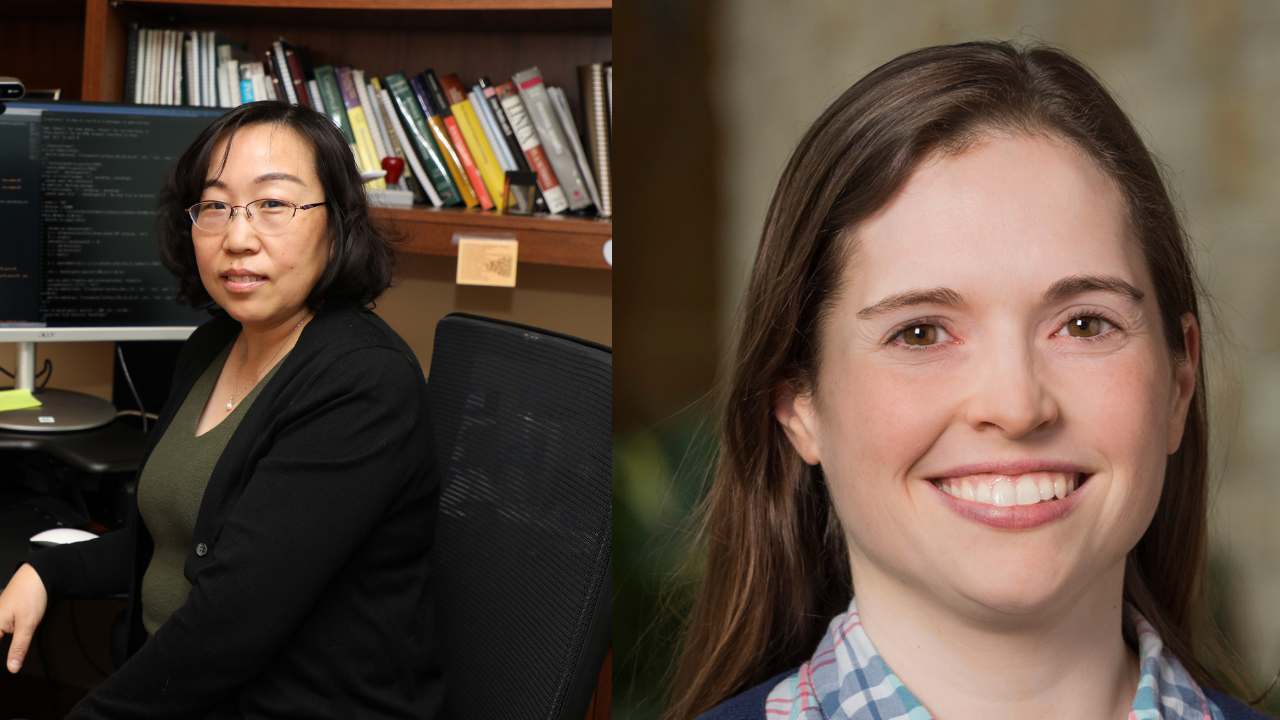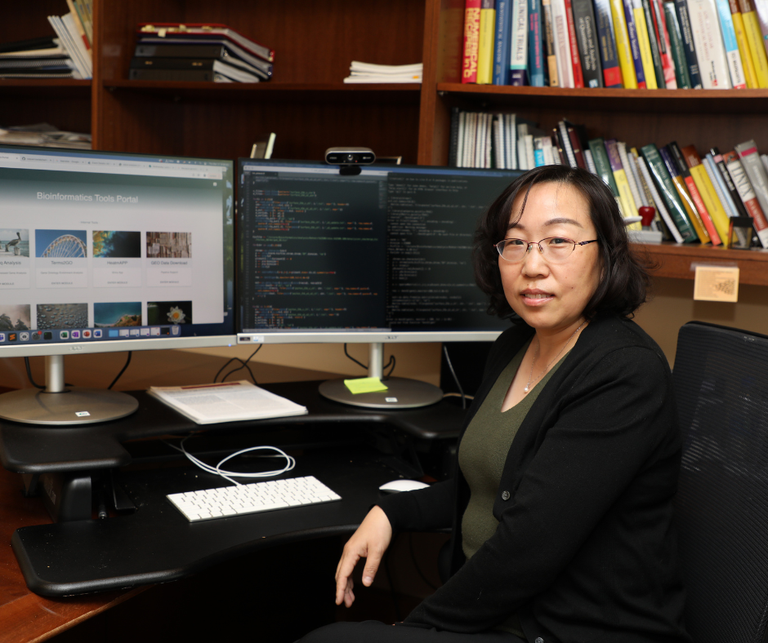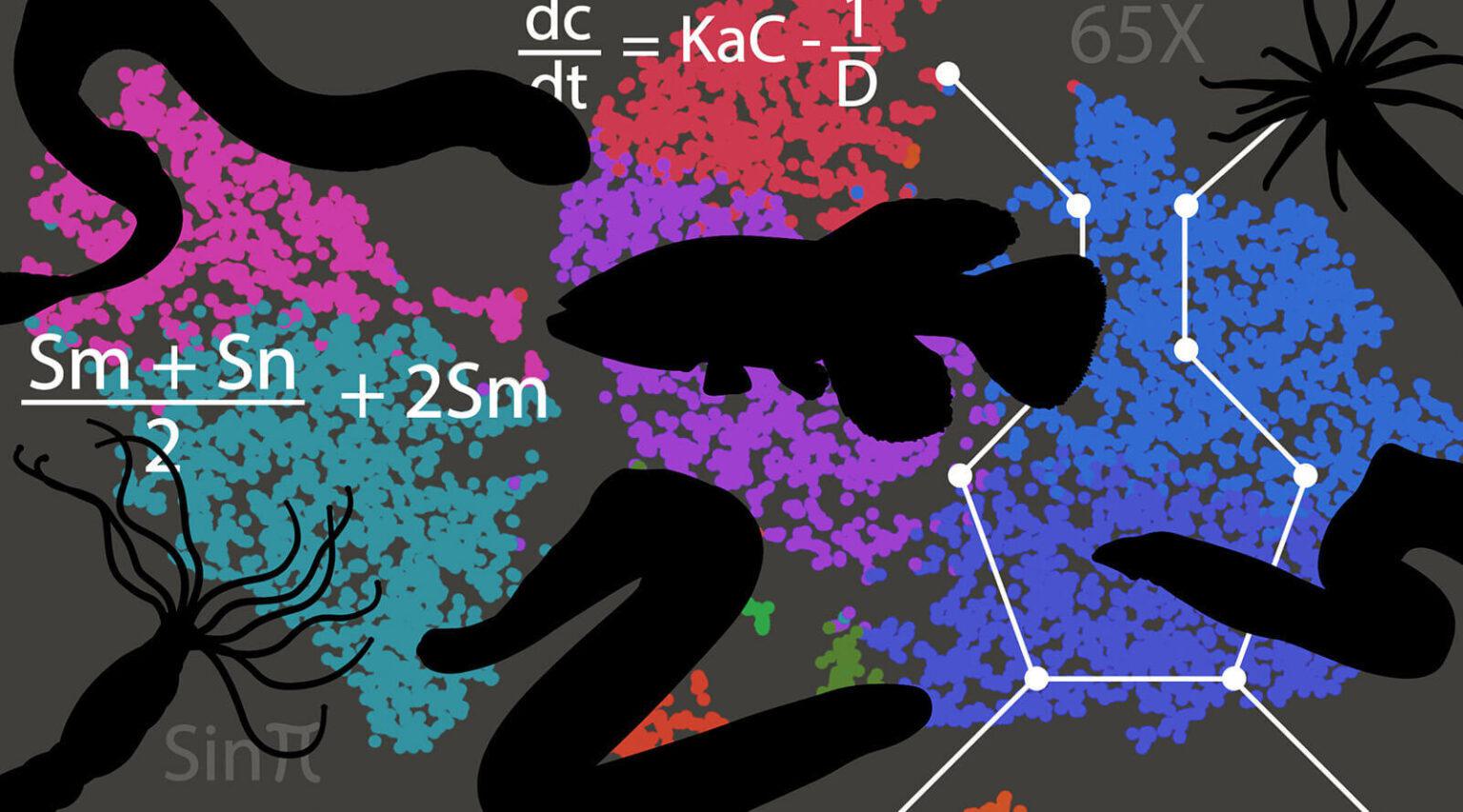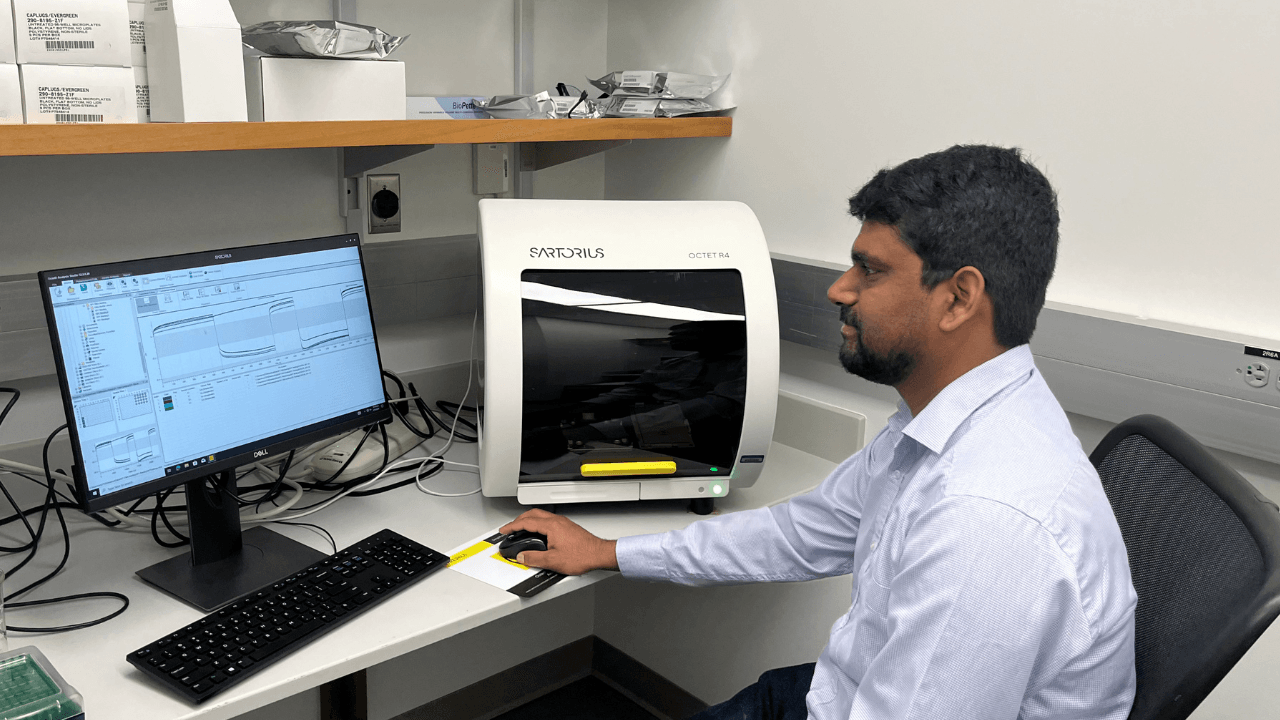News

22 April 2025
#TechTalk: What is the Cells, Tissues, and Organoids Technology Center?
A Q&A with Chongbei Zhao, Director, Cellular, Tissue, and Molecular Biology, and Yan Wang, Scientist I
Read Article
News
A Q&A with Hua Li, Director of Computational Biology, and Madelaine Gogol, Manager, Computational Biology

Would you explain what the Computational Biology Technology Center does, and how its work supports the mission of the Stowers Institute?
HL: The Computational Biology Technology Center helps ensure that every experiment is maximized through rigorous, data-driven interpretation. Essentially, we transform genome sequences and genomic datasets into interpretable biological insights. We do this by conducting rigorous analyses—creating tables and figures that highlight key patterns and address fundamental questions in biology.

Hua Li, Ph.D.
What types of data or questions do you typically work with? How does computational biology help scientists uncover insights that might be hard to see through traditional experiments alone?
MG: Sequencing data – measuring DNA and RNA activity – has long been central to our work. Yet, the variety of data types has rapidly expanded over the past few years. We now analyze which genes are turned on or off and how DNA is packaged in individual cells, create spatial maps showing gene activity in tissues, and piece together DNA sequences to build new genomes.
Stowers researchers often push the boundaries of scientific discovery, and today’s advanced platforms allow them to ask and answer big scientific questions that were once out of reach.

Madelaine Gogol
What are some of the key tools or technologies you use—such as machine learning, modeling, or big data analysis—and how do these approaches accelerate discovery?
HL: We use programming languages like R and Python, along with libraries such as Bioconductor, SciPy, and scikit-learn, to process, analyze, and visualize large datasets. Machine learning helps us classify cell types, predict regulatory elements, and detect subtle patterns, while deep learning and transformer-based AI now allow us to model sequences, simulate mutations, and predict the effects of genetic variation with greater accuracy.
As data science continues to evolve rapidly, how do you stay on the cutting edge? Are there any emerging trends or technologies in computational biology that you're particularly excited about?
MG: We stay connected to the scientific community by attending conferences, reading papers, and following developments online. Two exciting trends are the rise of high-throughput spatial methods and advances in deep learning/AI. As spatial methods improve and become more accessible, they provide new layers of data for understanding systems in detail. Large AI models, or foundation models, can uncover hidden patterns in data that may be difficult for humans to detect.
HL: We stay at the forefront through collaborations with technology developers and the broader computational biology community. Our bi-weekly journal club and active participation in conferences help us evaluate and adopt the best tools. One exciting trend is large-scale AI-driven methods, like AlphaGenome, which aim to predict genome regulation much as AlphaFold transformed protein structure. Like ChatGPT in daily life, these tools have the potential to reshape how we model, interpret, and understand biology.
How do you help researchers who may not have a computational background make the most of the tools and analyses your team offers?
MG: We aim to support researchers at whatever level they choose. We offer a series of training courses for those interested in learning bioinformatics skills. Since some methods do require significant time to learn, we often perform analyses ourselves and provide reproducible reports with the code, figures, tables, and interactive plots or web apps. We meet to explain the results and plan the next steps. Generative AI has expanded access to coding, and when used carefully can help speed the path from data to understanding.
News

22 April 2025
A Q&A with Chongbei Zhao, Director, Cellular, Tissue, and Molecular Biology, and Yan Wang, Scientist I
Read Article
News

07 January 2025
A Q&A with Jay Unruh, Ph.D., Director of Scientific Data, Sean McKinney, Ph.D., Head of Computational Imaging, and Chris Seidel, Ph.D., Genomics Scientist
Read Article
News

06 June 2024
How new technology at the Institute is helping move science forward – from protein biochemistry to drug development
Read Article
